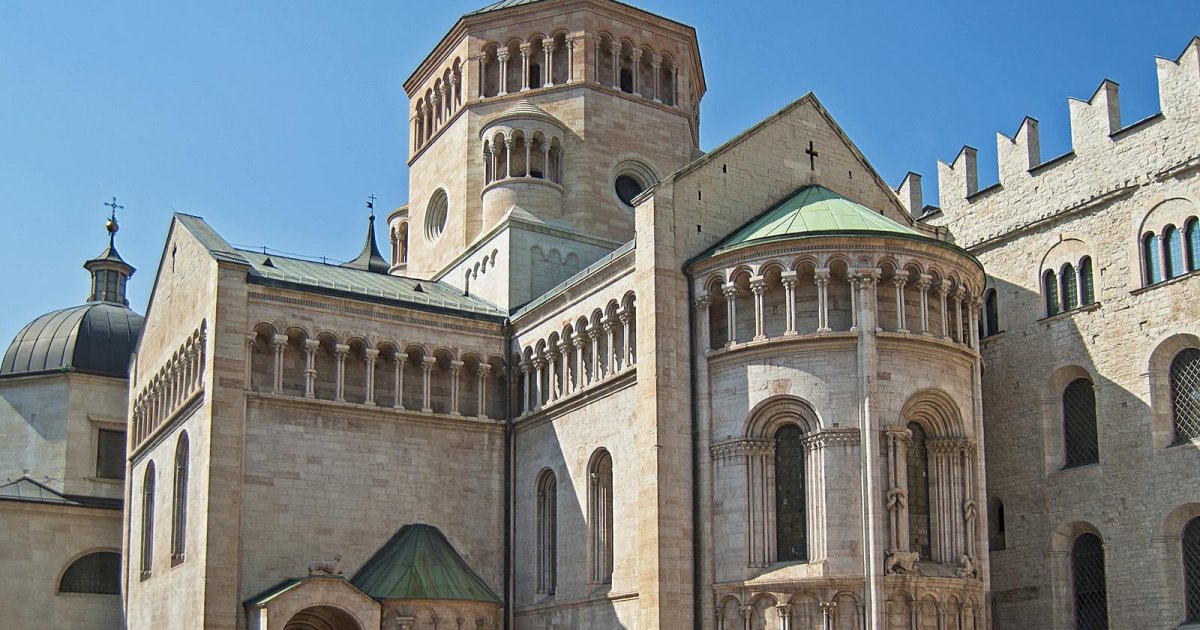CATHEDRAL, Exterior
 Language: English / USA
Language: English / USA
Hi, my name’s Rick, and I’m your personal guide. Along with MyWoWo, I’d like to welcome you to one of the Wonders of the World: Trento Cathedral.
The Romanesque Trento Cathedral, dedicated to San Vigilio, was built on the site of an earlier chapel dedicated to the saint, a former bishop and patron saint of the city. The church was built outside the city walls, because it was also used as a burial place; it is the resting place of Saint Vigilius, as well as of three martyrs, Saint Sisinnius, Saint Marturius and Saint Alexander.
Despite its smoothly balanced overall appearance, Trento Cathedral is actually the result of a complex construction process that took place over several centuries. Begun in the first half of the 11th century, it was rebuilt at the beginning of the 13th century on the orders of Bishop Federico Wanga, on a design by Adamo d’Arogno. After d’Arogno’s death, the work was continued by other master builders, without making any changes to the original project guidelines. The intricate construction history of the Cathedral is evident, for example, on the beautiful Romanesque portal: featuring both Gothic and Renaissance elements, it was rebuilt at the beginning of the 16th century using fragments from earlier centuries.
Also dating to the 16th century is the magnificent bell tower, which was topped in the 19th century by a characteristic onion-shaped dome.
I suggest you stand back and admire the building from the center of the square, so you can appreciate one of the main features of this splendid architectural complex: the beauty of the austere, yet elegant, Romanesque-Gothic lines. If you observe the side of the Cathedral, you’ll notice the extraordinary care taken with the proportions and the fine workmanship of the stone. On this side, the exterior is embellished with a gallery of small arches, and by the magnificent thirteenth-century rose window known as the Wheel of Fortune because Fortune is personified in the center.
In a niche to the left of the entrance portal, known as Porta del Vescovo, you can see the Madonna degli Annegati, or Our Lady of the Drowned, a copy of the original currently is conserved inside the Cathedral, and is so called because of the ancient custom of placing bodies recovered from the river at her feet.
An interesting fact: according to a number of legends, a very long underground tunnel starts out from the Cathedral and runs to Palazzo Delle Albere. It is said to have been made for Cardinal Madruzzo, prince-bishop of Trento, so that he could escape in the event of danger.



